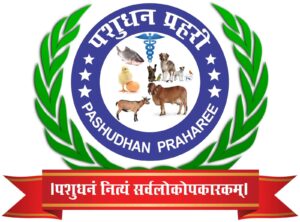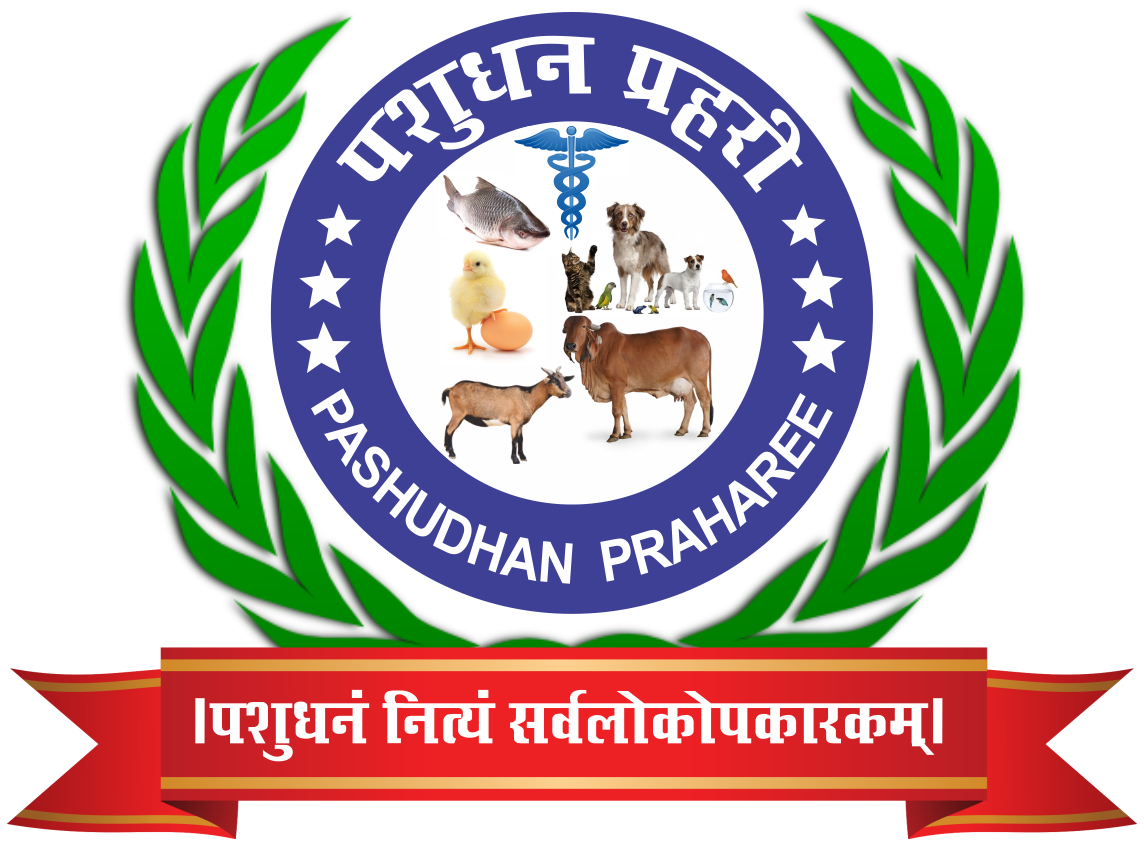Strengthening Animal Health Security: The Importance of Notifiable Disease Reporting in India
What are Notifiable Diseases?
Notifiable diseases are those infectious diseases that require mandatory reporting to government or public health authorities as per national and international regulations. The World Health Organization (WHO) and the World Organisation for Animal Health (WOAH, formerly OIE) maintain lists of such diseases to ensure surveillance, control, and prevention of outbreaks that pose risks to public health, animal populations, and the economy.
WHO & WOAH-Listed Notifiable Animal Diseases
The WHO, in collaboration with WOAH, classifies certain animal diseases as notifiable, primarily due to their zoonotic potential, economic impact, or rapid transmission. Some of the most critical notifiable animal diseases include:
- Zoonotic Diseases (Affecting Both Animals & Humans)
- Rabies
- Anthrax
- Brucellosis
- Avian Influenza (Bird Flu)
- Bovine Tuberculosis
- Nipah Virus Infection
- Crimean-Congo Hemorrhagic Fever (CCHF)
- Highly Contagious Livestock Diseases
- Foot-and-Mouth Disease (FMD)
- Peste des Petits Ruminants (PPR)
- Lumpy Skin Disease (LSD)
- African Swine Fever (ASF)
- Classical Swine Fever (CSF)
- Poultry & Aquatic Animal Diseases
- Newcastle Disease
- Infectious Bursal Disease
- White Spot Syndrome Virus (Shrimp Disease)
- Other Economically Significant Diseases
- Bovine Spongiform Encephalopathy (BSE) (Mad Cow Disease)
- Rinderpest (Declared eradicated but still under surveillance)
Criteria for Declaring a Disease as Notifiable in India
The Government of India, through the Department of Animal Husbandry & Dairying (DAHD), Ministry of Fisheries, Animal Husbandry & Dairying, and in coordination with the WOAH, determines the notifiability of animal diseases based on the following criteria:
- Public Health Impact – If a disease is zoonotic (transmissible to humans) and poses a significant risk to human health (e.g., Rabies, Brucellosis, Avian Influenza).
- Economic Impact – Diseases that can cause huge financial losses to farmers, industries, and national trade (e.g., Foot-and-Mouth Disease, PPR, African Swine Fever).
- Rapid Spread & Epidemic Potential – Highly contagious diseases that can spread across districts, states, or internationally (e.g., Lumpy Skin Disease, Newcastle Disease).
- International Trade Regulations – If a disease affects exports of livestock and animal products, making reporting mandatory under WOAH and WTO-SPS (Sanitary and Phytosanitary Measures Agreement).
- Endemic vs. Emerging Threats – Endemic diseases (common in India) or emerging/re-emerging diseases that require active surveillance and control.
- Government Regulations & Policy – The Livestock Health and Disease Control Programme (LHDCP) and the Prevention and Control of Infectious & Contagious Diseases in Animals Act, 2009, mandate notification of certain diseases.
Legal Framework for Notifiable Animal Diseases in India
- The Prevention and Control of Infectious & Contagious Diseases in Animals Act, 2009 – Specifies notifiable diseases and the procedures for disease surveillance, quarantine, and control.
- Livestock Health and Disease Control Programme (LHDCP) – Implements vaccination, surveillance, and disease eradication measures.
- National Animal Disease Control Programme (NADCP) – Focuses on controlling FMD and Brucellosis through mass vaccination programs.
- WOAH & SPS Agreement Compliance – Ensures India’s livestock industry meets global trade standards.
Norms for Reporting of Notifiable Animal Diseases in India
In India, the reporting of notifiable animal diseases follows a structured protocol mandated by the Department of Animal Husbandry & Dairying (DAHD), Ministry of Fisheries, Animal Husbandry & Dairying, under the Prevention and Control of Infectious & Contagious Diseases in Animals Act, 2009. These norms ensure early detection, containment, and prevention of disease spread, safeguarding both livestock and public health.
- Legal Framework for Reporting
- The Prevention and Control of Infectious & Contagious Diseases in Animals Act, 2009
This Act makes it mandatory to report certain animal diseases to authorities. The Act defines:
- Notifiable Diseases – A list of infectious diseases that must be reported.
- Competent Authority – Veterinary officers, state animal husbandry departments, and the central government.
- Control Measures – Quarantine, movement restrictions, culling, and vaccination.
Livestock Health and Disease Control Programme (LHDCP)
This national program ensures:
- Timely disease reporting
- Surveillance & outbreak investigation
- Mass vaccination campaigns
- Quarantine and biosecurity measures
National Animal Disease Reporting System (NADRS 2.0)
- An online real-time surveillance system that links veterinary hospitals, district animal husbandry offices, and central monitoring agencies.
- Reports are digitally submitted by veterinary officers, ensuring speedy communication and response.
- Reporting Procedure
- Who Should Report?
- Veterinary Officers & Field Veterinarians – Must report cases to district/state authorities.
- Livestock Owners & Farmers – Should inform local veterinary hospitals immediately.
- Poultry & Dairy Farms – Large-scale commercial farms must report any unusual mortality or symptoms.
- Research & Diagnostic Labs – Must notify authorities upon disease confirmation.
- Animal Transporters & Traders – Required to report any suspected cases during livestock movement.
How to Report?
Immediate Notification
-
- Any suspected case of a notifiable disease must be reported within 24 hours to the nearest veterinary officer or animal husbandry department.
- Local veterinary officers escalate the report to district and state-level authorities.
Laboratory Confirmation
-
- Samples (blood, tissue, feces, etc.) are sent to approved disease diagnostic laboratories (like IVRI, National Veterinary Disease Diagnostic Laboratories, and State Veterinary Labs).
- Confirmatory test results are reported to the State Disease Control Authorities and DAHD, Government of India.
Entry into NADRS 2.0 System
-
- Verified cases are logged into the National Animal Disease Reporting System (NADRS) for nationwide tracking and response.
Notification to Central Government & WOAH (OIE)
-
- Certain high-risk diseases (e.g., Foot-and-Mouth Disease, Avian Influenza, African Swine Fever) must be reported to WOAH (World Organisation for Animal Health) by the Government of India.
Response & Action Taken After Reporting
Once a disease is reported, authorities follow a disease containment and response protocol, including:
Disease Confirmation & Surveillance
- Lab confirmation of suspected cases.
- Surveillance zones are created in affected areas (Primary & Secondary Surveillance Zones).
Quarantine & Movement Restrictions
- Affected farms and villages are quarantined to prevent disease spread.
- Livestock movement is restricted, and affected animals may be culled if necessary.
Mass Vaccination & Biosecurity Measures
- Emergency vaccination programs are launched for diseases like FMD and Brucellosis.
- Strict biosecurity measures are implemented to prevent outbreaks.
Farmer Compensation & Support
- In cases of culling, affected farmers are provided compensation as per government guidelines.
- Awareness campaigns are conducted for early disease recognition and prevention.
Consequences of Non-Reporting
Failure to report a notifiable disease can lead to:
- Legal penalties under the Prevention & Control of Infectious & Contagious Diseases Act, 2009.
- Spread of disease to other farms and regions, causing heavy economic losses.
- Loss of livestock trade opportunities due to international restrictions.
Notifiable diseases in India, particularly in the livestock and poultry sector, play a crucial role in public health, economic stability, and trade regulations. Effective surveillance, early detection, vaccination, and control measures are essential to mitigate disease risks. Reporting notifiable diseases helps prevent outbreaks, protects farmers, and ensures sustainable livestock development in India.
The timely and mandatory reporting of notifiable animal diseases in India is crucial for disease control, food security, and economic stability. The NADRS 2.0 system, along with veterinary and farmer participation, plays a vital role in early disease detection and mitigation, ensuring the health and productivity of India’s livestock sector.



